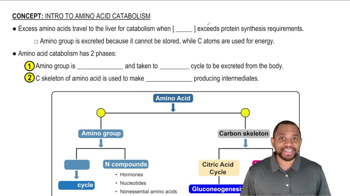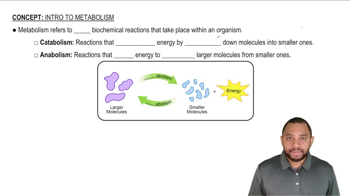Here are the essential concepts you must grasp in order to answer the question correctly.
Catabolism
Catabolism refers to the metabolic pathways that break down molecules into smaller units, releasing energy in the process. This energy is often captured in the form of ATP, which cells use for various functions. An example of a catabolic process is the breakdown of glucose during cellular respiration.
Recommended video:
Intro to Amino Acid Catabolism Concept 1
Anabolism
Anabolism encompasses the metabolic pathways that construct molecules from smaller units, requiring energy input. This process is essential for growth, repair, and maintenance of cells and tissues. An example of an anabolic process is the synthesis of proteins from amino acids.
Recommended video:
Intro to Metabolism Concept 1
Lipid Synthesis
Lipid synthesis is an anabolic process where fatty acids and glycerol are combined to form lipids, such as triglycerides. This process is crucial for storing energy, forming cell membranes, and producing signaling molecules. Understanding lipid synthesis helps in comprehending how the body stores energy and regulates metabolism.
Recommended video:
Intro to Lipids Example 1






